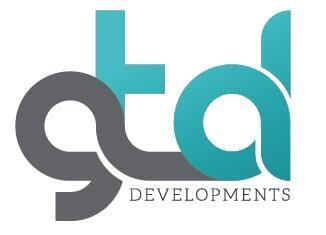BLUETOOTH® MESH
Lighting control and IOT network
The features of Bluetooth Mesh makes it an ideal solution for IOT and lighting controls:
- Based on Bluetooth low energy, highly proven and interoperable with over 4.5 billion devices shipped in 2021
- Self-forming mesh network with no central controllers or central point of failure
- Up to 75 meters between devices in high speed mode and over 1000 meters in long range mode
- A single network can support up to 32,767 addresses
- With mandatory AES encryption and 3 different keys (Device, Application & Network) it is one of the most secure IOT networking platforms
- Major international lighting manufacturers contribution to the Lighting Control model has resulted in all the benefits of DALI type control without the 64 device limit (Dimming, zones, scenes, time scheduling motion and lux control)
- Mesh sensor model allows various sensors (Temperature, pressure, vibration,etc) to be integrated directly onto the Bluetooth network
- Bluetooth Mesh Gateways allow data from sites to be pushed directly to a web based data server
- Generic on/off and level models allow for the addition of any devices
Bluetooth Mesh is fast becoming one of the preferred wireless networking protocols for IOT. One of the biggest challenges with the deployment of IOT network infrastructure is where to place all the repeaters, gateways and edge computers. Traditionally the installation cost has been preventative in the formation of large scale IOT network infrastructure. GT Developments approach is to use the facilities lighting infrastructure (which generally covers the entire site) and digitally control it with mesh based LC nodes. Lighting can be formed into groups and motion detection together with active dimming used to drive energy savings. Sites which have been refit from traditional lighting sources to efficient LED solutions with Bluetooth mesh technology generally see a ROI less than 4 years.
Once the mesh network is in place it can be used to add a variety of sensors and with mesh being non-proprietary you are never tied in to a single supplier for any of the network infrastructure or services.
Some examples for the expansion capabilities of mesh network beyond the lighting control network are:
- Environmental sensing - whether this be in an office, mine or industrial plant. Gasses, temperatures and pressures can be measured in real time and data fed directly to a server. Additional warning indicators (lights or sirens) can also be added directly to the network and react to the reading directly, this removes the central controller as a point of failure in an emergency.
- LiDAR detection and people counting – this technology is used for space optimisation and collision avoidance. LiDAR can also be used to count stock or goods moving through a production line or warehousing operation.
- Asset tracking – many different asset tracking topologies exist within the Mesh ecosystem. These can be used to track personnel, equipment or stock.
- Indoor navigation – the fact that almost every hand held device has a Bluetooth radio means that these devices can interface with data sent from Bluetooth mesh nodes. This data can be used to navigate through large installations like airports or hospitals while showing your real time position. It can also be used in retail to guide shoppers to specific items or request assistance
- Emergency Evacuation – by using luminaires with coloured directional LED’s a Bluetooth mesh system can be used to dynamically and in real time guide people out of facilities.
For examples on how Bluetooth mesh networks are formed go here to visit our products page.

